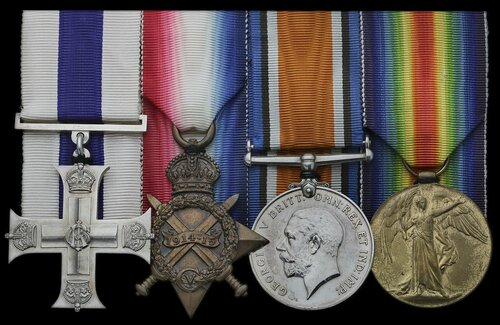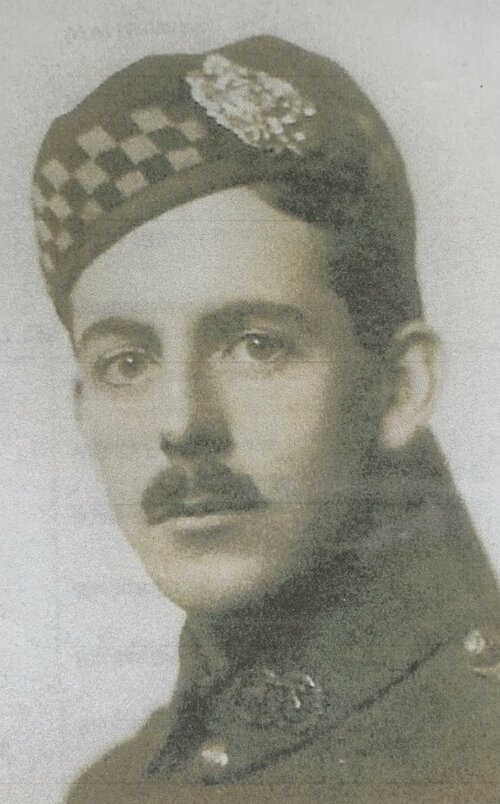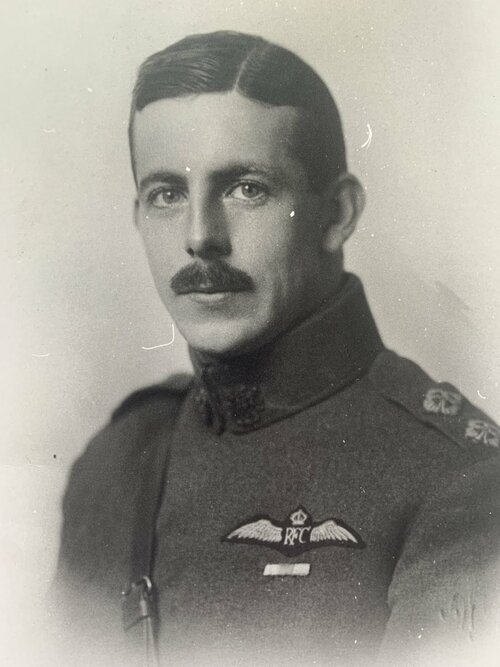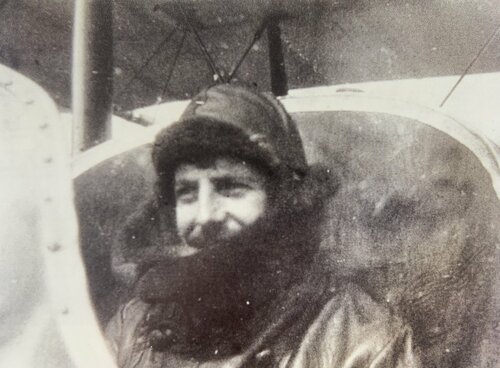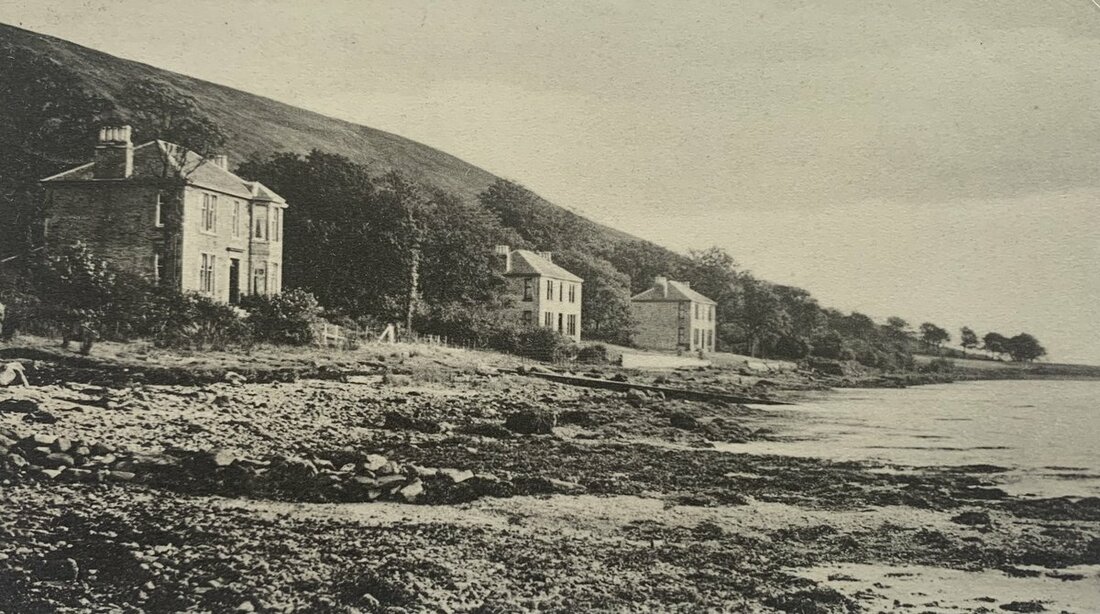Auction: 21003 - Orders, Decorations and Medals
Lot: 541
A good early Royal Flying Corps 'Somme' 1916 M.C. group of four awarded to Captain P. C. Campbell, Royal Flying Corps, late Argyll & Sutherland Highlanders
Military Cross, G.V.R., the reverse contemporarily engraved 'Lieut. P. C. Campbell, Somme 18.11.16.'; 1914-15 Star (2. Lieut P. C. Campbell, A. & S. Highrs.) British War and Victory Medals (Capt. P. C. Campbell, R.F.C.), good very fine (4)
Exhibited:
100 Years of the Royal Air Force, April 2018, Spink.
M.C. London Gazette 14 November 1916:
'For conspicuous skill and gallantry on many occasions. On one occasion, seeing a Cavalry patrol held up [on 26 September 1916 at Quandacourt], he came down to 600 feet, dropped bombs on the enemy and enabled his Observer to enfilade the hostile trench with machine-gun fire. Finally, his engine was put out of action by rifle fire from the ground.'
Patrick Colin Campbell was born in Droon on 6 November 1889, the son of Major E. P. C. Campbell, Royal Highlanders. Educated at Bradfield College 1904-07, before the outbreak of the Great War Campbell was an apprentice engineer with an ironwork's at Clydebank, Glasgow and later at the Argyll Motor Works. He was commissioned 2nd Lieutenant in Argyll & Sutherland Highlanders on 3 October 1914 and served in France from 10 March 1915 attached to the 2nd Battalion, Royal Highlanders. It was whilst at Neuve Chapelle in March 1915 and Bethune he suffered with 'trench feet'. Having been seconded to the Royal Flying Corps he qualified as a Pilot on a Cauldron Biplane at the Beatty School, Hendon on 8 November 1915 (Certificate No. 2017). Campbell joined No. 28 Squadron on 24 February 1916, before transferring to No. 18 Squadron, with whom he serve with from April-December 1916. During the course of that tour he was in the thick of the action, as to be expected by Royal Flying Corps Pilot.
On 16 September 1916 Campbell and his Observer 2/Lieut. W.A. MacKay damaged and drove down a German L.V.G. two seater reconnaissance plane near Combles on the Somme, it was seen taking a forced landing near Bapaume. The aforementioned action of 26 September led to his Recommendation for the Immediate award of the Military Cross on 2 October 1916, which was duly granted. Wasting no time, this time with the gallant 1st Class Air Mechanic O. F. Watts as his Observer, on 10 November the pair dropped bombs to good effect on an enemy aerodrome and before returning to base attacked four trains in Queant Station with machine gun fire. The following night Campbell and Watts attacked moving trains, two drums of tracer ammunition were expended and one train set on fire. Royal Flying Corps Communiqués 1915-16 gives further details
'Crossed the line by following the railway from Albert to Arras to Achiet-le-Grand and then West. Identified Ervillers by bend in road; also Behagnies and Sapignies. A train was going North along the St. Ledger - Boyelles railway. We came down to 2,000 feet but did not bomb it as I thought it might be empty. I then followed railway until I saw three balloon sheds. Dropped one 20lb Hales and two incendiary bombs. They missed the sheds, but hit a shed in the town. The bombs were dropped from 2,000 feet. I then saw a train coming West, just West of Ecoust. I caught up the train from behind, it was a short one composed of four closed and three open trucks. The latter were full of boxes, we were 100 feet above it and I dropped the one single bomb remaining on right side, but it fell behind the train. The other four fell on the second closed truck behind the locomotive. The explosion knocked back my Observer, who was leaning forward and made my machine sway. We then circled round and emptied two drums into the train, which had stopped. The light on the tail of the train was still lit, also the headlights, then we went West again and climbed to about 3,000 feet. We saw another train coming from Boyelles to St. Leger. We came down to the North side of the train and turned to follow it. My Observer opened fire at it at about 200 yards range when we were about 200 feet up. He got about two shots into the centre of the train. The next few shots were just low, the next ten or so went over, the remainder hit the train, including the front of it about the engine, which put on speed. I crossed the line and gave my Observer time to change the drum and then turned to the left and flew over the train again, going down to 100 feet. My Observer got the range and emptied all the second drum into the front carriages and engine, which stopped and gave off clouds of steam. We then turned West and came down and the next one went over me about 500 feet or so. I then turned North for a minute or so and then West. No more rockets were fired.'
Watts was awarded the M.M. (Posthumous).
Campbell later took Command of 'A' Flight (DH5's) and later 'B' Flight as well as temporary Command of No. 28 Squadron 28 June 1917-12 July 1917 in France, he was admitted to hospital on 25 October 1917 in Italy. On discharge from hospital he was assessed as fit for Home Service only and served at HQ 48 Wing, No. 1143 Squadron, No.1. School of Navigation and 8 Training Depot Station. Being re-admitted to hospital from 29 October 1918-5 November 1918, Campbell went to France for the final time on 23 January 1919 as a Flight Commander S.W. Area. He was transferred to the Unemployed List on 18 April 1919.
Returned to live at Colintraive, Argyll, Campbell died on 26 February 1931; sold together with two original postcards of his house, copied research including a number of photographs besides No. 18 Squadron's article Sense of Duty by Peter Wright as published in Cross & Cockade International Journal, Vol 27 No.2, 1996 and Royal Flying Corps Communiques 1915-16.
For the M.M. to his Observer, Watts, please see Lot 543.
Subject to 20% VAT on Buyer’s Premium. For more information please view Terms and Conditions for Buyers.
Sold for
£3,500
Starting price
£2200

